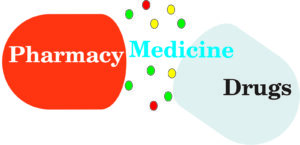Thyroiditis | What Is Thyroiditis And Symptoms Observed
Thyroiditis is inflammation of the thyroid. It occurs when the body’s immune system makes antibodies that attack the thyroid. Causes of thyroiditis include:
- Autoimmune diseases like type I diabetes and rheumatoid arthritis,
- Genetics,
- Viral or bacterial infection,
- Certain types of medicines. ,Two common types of thyroiditis are Postpartus thyroiditis and Hashimoto’s disease.
Postpartus thyroiditis: It is inflammation of the thyroid after giving birth, affects 10% of women. It often goes undiagnosed because symptoms are much like the “baby blues” that may follow delivery. Women with postpartum thyroiditis may feel very tired and moody. Postpartum thyroiditis typically happens in two phases, though not everyone with the condition goes through both phases:
- The first phase starts 1 to 4 months after giving birth and typically last 1 to 2 months with signs and symptoms of hyperthyroidism, because the damaged thyroid leaks thyroid hormones out into the bloodstream.
- The second phase starts about 4 to 8 months after delivery and lasts 6 to 12 months with signs and symptoms of hyperthyroidism because the thyroid has lost most of its hormones or because the immune attack is over and the thyroid may recover later.
Hashimoto’s disease: Hashimoto’s disease is also known as chronic lymphocytic thyroiditis. It can occur at any age, but most common in middle-aged women. The disease occurs when the body’s immune system mistakenly attacks and slowly destroys the thyroid gland and its ability to produce hormones. Some people with mild cases of Hashimoto’s disease may have no obvious symptoms. The disease can remain stable for years, and symptoms are often subtle and also not specific, which means they mimic symptoms of many other conditions.
- Fatigue,
- Depression,
- Constipation,
- Mild weight gain,
- Dry skin,
- Dry, thinning hair,
- Pale, puffy face,
- Heavy and irregular menstruation,
- Intolerance to cold,
- Enlarged thyroid, or goiter.
Hashimoto’s diagnosis and treatment: Testing the level of TSH is often the first step when screening for any type of thyroid disorder. It include blood test to check for increased levels of TSH as well as low levels of thyroid hormone (T3 or T4) if experiencing some of the above symptoms. Hashimoto’s disease is an autoimmune disorder, so the blood test shows abnormal antibodies that might be attacking the thyroid.
Treatment for Hashimoto’s disease
There is no known cure for Hashimoto’s disease. Hormone-replacing medication is often used to raise thyroid hormone levels or lower TSH levels. It can also help relieve the symptoms of the disease. Surgery might be necessary to remove part or all of the thyroid gland in rare advanced cases of Hashimoto’s. The disease is usually detected at an early stage and remains stable for years because it progresses slowly.
Related Reads
Thyroid Disease| What Is Hypothyroidism & Hyperthyroidism Symptoms| Difference
Diabetes Mellitus Diagnosis Pathophysiology & Important Treatment Drugs
Endocrine Disorders What Causes It ? | Types of Endocrine Disorders
Anemia Risk Factors & Pathophysiology Of Its Types | Haematological Disease
Chronic Bronchitis Risk Factors Symptoms Treatment & Pathophysiology
